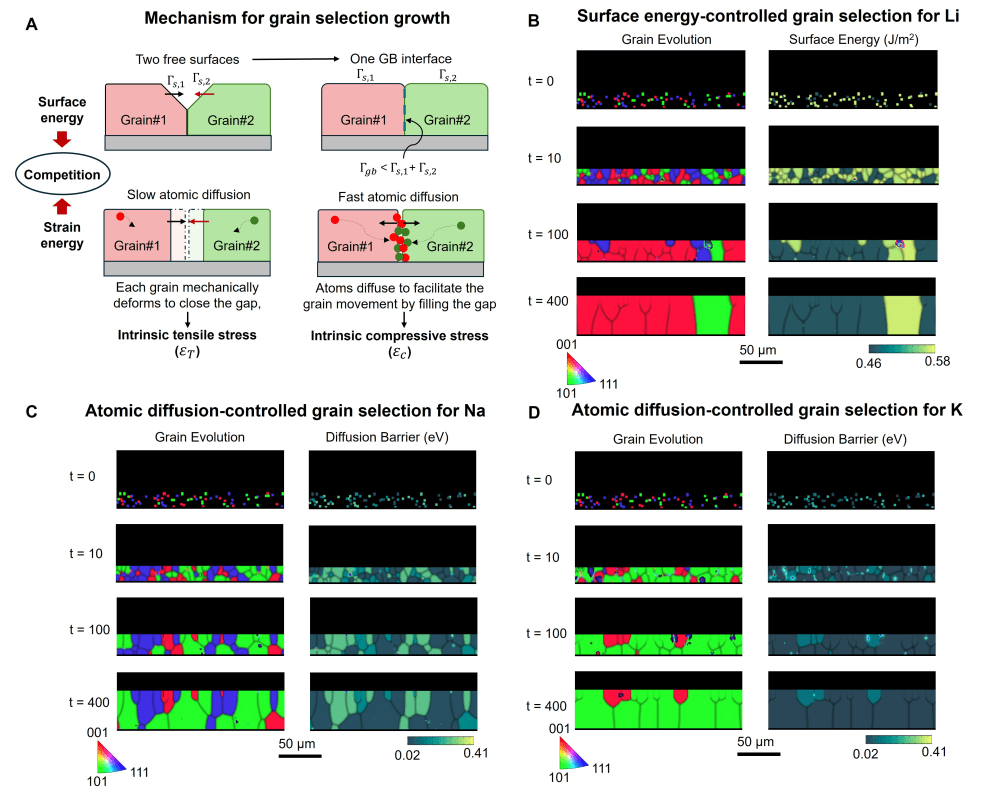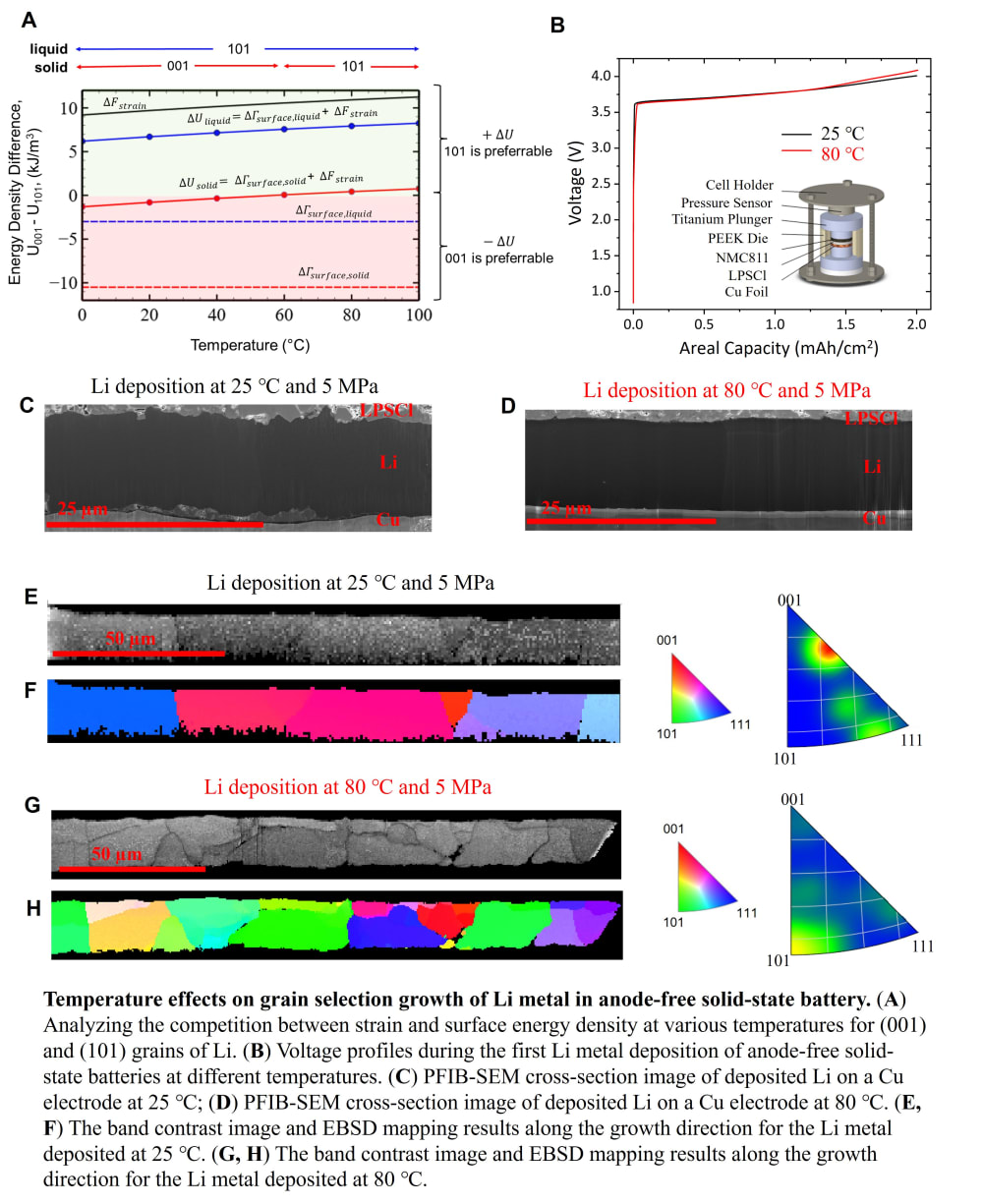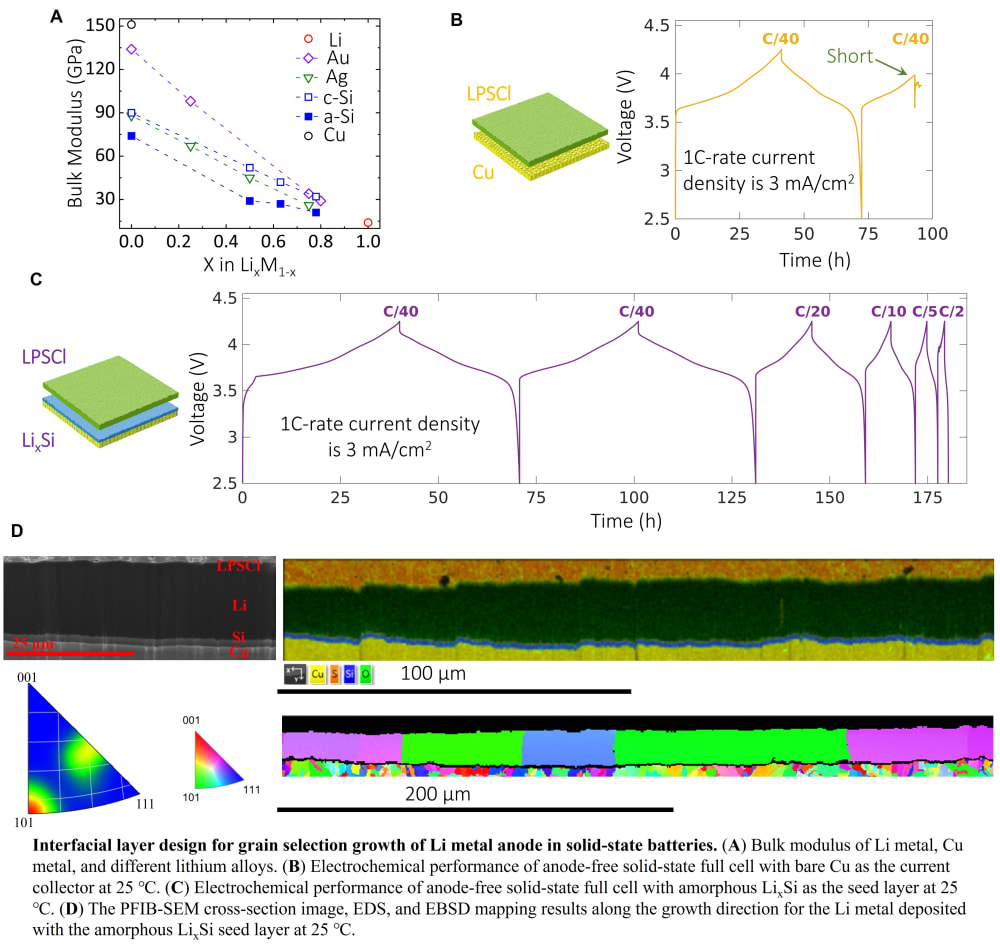The transition from intercalation-type anodes to metallic anodes represents a significant paradigm shift in energy storage technology. The energy density of alkali metal batteries to withstand repeated charge and discharge cycles depends on the efficiency of metal deposition and stripping. The morphology and microstructure of deposited alkali metal is a critical factor influencing the Coulombic efficiency (CE) and cycle life of batteries. The ideal microstructure for alkali metal deposits entails dense formations with minimal porosity (50 µm) exhibiting uniform defect distribution. These favored attributes promote uniform metal stripping at the reaction front, thereby avoiding the formation of highly porous and whisker-like inactive structures. However, low critical current densities (putational investigations have shown that such a decrease in critical current density stems from the formation of grain texture in the deposited Li. A general thermodynamic theory and phase-field model are formulated to study the grain selection growth of alkali metals.
Our study focuses on the interplay between surface energy and atomic mobility-related intrinsic strain energy in grain selection growth. Differences in grain selection growth arise from the anisotropy in surface energy and the diffusion barrier of alkali metal atoms. Our findings highlight the kinetic limitations of solid-state Li metal batteries, which originate from load stress induced surface energy anisotropy. These insights lead to the development of an amorphous LixSi1-x (0.50 rectly supports the development of high-energy-density solid-state batteries, which are critical for accelerating the electrification of transportation, improving grid-scale energy storage, and reducing greenhouse gas emissions.
Like this entry?
-
About the Entrant
- Name:Ying Meng
- Type of entry:teamTeam members:
- Minghao Zhang








